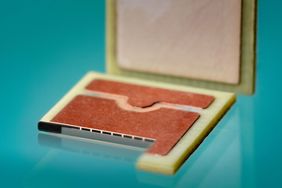Bitte um Mitwirkung: Umfrage zur strategischen Autonomie der Photonik am Standort Deutschland
In Zusammenarbeit mit dem Marktforschungsunternehmen TEMATYS führt SPECTARIS daher eine Untersuchung zur strategischen, d.h. zur wirtschaftlichen und technologischen Autonomie der Photonik am Standort Deutschland durch. Ein wesentliches Ziel des Projektes ist es, die Bedeutung der Photonik für andere Schlüssel- und Zukunftsindustrien zu unterstreichen, darzustellen, welche Folgen ein Ausbleiben von Produkten der Photonik für diese Anwendungsbereiche haben könnte und daraus Forderungen in Richtung Politik abzuleiten, um insbesondere die wirtschaftliche Autonomie der Photonik zu stärken.
Fraunhofer IZM is putting the electric car in the fast lane

Embedded silicon carbide on the way towards series production in electromobility © Fraunhofer IZM | Volker Mai
Skeptics of electromobility have raised critical questions, such as how fast an electric car can be driven and the maximum distances it can cover. That depends on the built-in power electronics – the heart of electromobility, if you will. Three factors are decisive when it comes to the installation of power electronics: space, weight, and efficiency. The semiconductor material silicon carbide (SiC) meets these conditions because it has a higher degree of efficiency and can or must be installed more compactly than conventional semiconductors made of silicon only.
Although some electric cars already run on SiC semiconductors, there is still considerable potential here to fully exploit the efficiency of the SiC semiconductor material. The key to the success of SiC lies in the packaging of the semiconductors. In order to be able to use the material for large-scale industrial production, the SiC Modul project will take industrial framework conditions into consideration right from the start. For example, the module being developed within the project is based on a traditional printed circuit board design that has already been established in industry and is easy to implement.
At the same time, the module will include the latest lessons learned from research: the semiconductor is not contacted with a wire bond connection, but is embedded directly into the circuit via a galvanically produced copper contact, meaning that the cable can be shortened and the power routing can be optimized. The potential customer is also involved in the development process: in the first year of the project, a requirement specification was drawn up in which the electrical, thermal, and performance requirements for the module and the semiconductors were defined. The specifications that the product must meet were drawn up and agreed in close collaboration with users such as automobile manufacturers, component suppliers, and component manufacturers.
Lars Böttcher is group manager at Fraunhofer IZM and subproject manager for the SiC project. He explains: “We are going beyond general feasibility,” because the intention is that the project should develop more than just a prototype. The aim is therefore to put both the new semiconductor material silicon carbide and the embedment technology towards series production.
